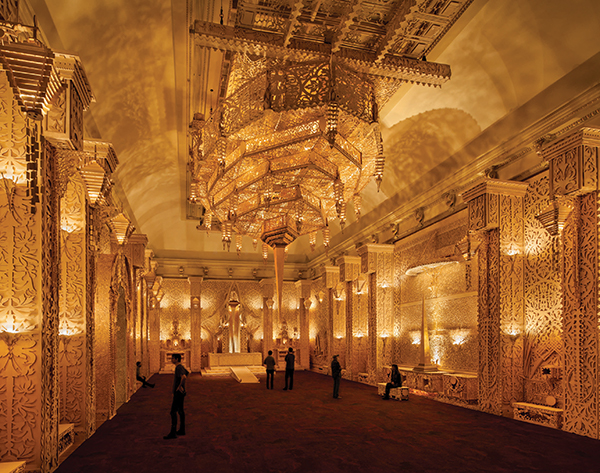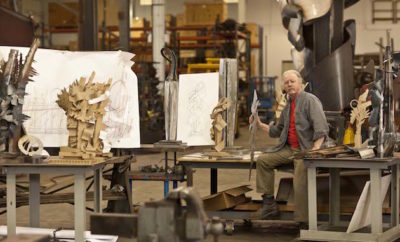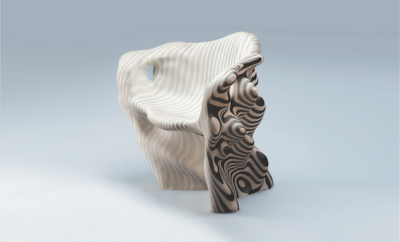
Exhibition
Creative Sparks
TRANSPLANTED FROM THE VAST DESERT of Nevada to the Second Empire–style edifice known as the “American Louvre” in Washington, DC, Burning Man is taking up temporary residence at the Smithsonian American Art Museum’s Renwick Gallery. No Spectators: The Art of Burning Man, on view through January 21, 2019 (the first floor of exhibits closes on September 16), is the first major national exposition for the art of the saturnalia that’s been raging annually on the playa north of Reno since 1990.
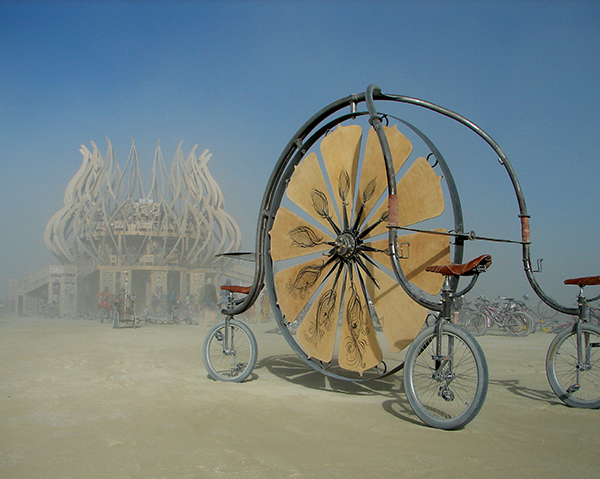
Evotrope by Richard Wilks in collaboration with Michael Conn and Victor Rodarte, 2009, is a giant mobile zoetrope made of steel, plywood, and motorcycle and unicycle parts. Participants can animate the piece using a hand crank.
Installed throughout the building, and spilling into the surrounding neighborhood, where six public works are on display, The Art of Burning Man includes large-scale installations, costumes, jewelry, video, “mutant vehicles,” and photography—most drawn from the archives of the Nevada Museum of Art’s Center for Art + Environment.
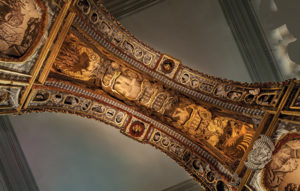
Detail of Paper Arch, 2018, by Michael Garlington and Natalia Bertotti.
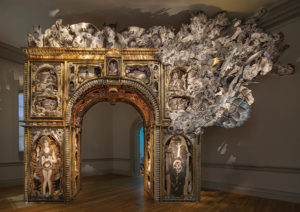
Garlington and Bertotti’s Paper Arch inside the exhibition space. Made of plywood, hardboard, bond paper, fabric, and other found objects, the arch stands 15 feet tall and more than 25 feet wide and was commissioned specifically for the exhibition.
Burning Man has been a ticketed event since the mid-’90s, and a portion of the proceeds each year goes to artist grants. According to Nora Atkinson, curator of craft at the Smithsonian American Art Museum and organizer of the exhibition, this money—along with funding from Silicon Valley, as the New York Times reports— has encouraged Burner artists to write a new chapter in craft history, one she considers a Digital-Age analogue to the arts and crafts movement. But unlike William Morris and others who decried the advance of mechanization, the maker-culture devotees at Burning Man embrace and even sanctify technological progress. The new New Age ethos is evident in objects such as FoldHaus Art Collective’s Shrumen Lumen and Kate Raudenbush’s Future’s Past, a laser cut–steel edifice spun round with an aureola of light—not to mention pseudo-sacral vestments made from modern materials and once worn by Burning Man attendees.
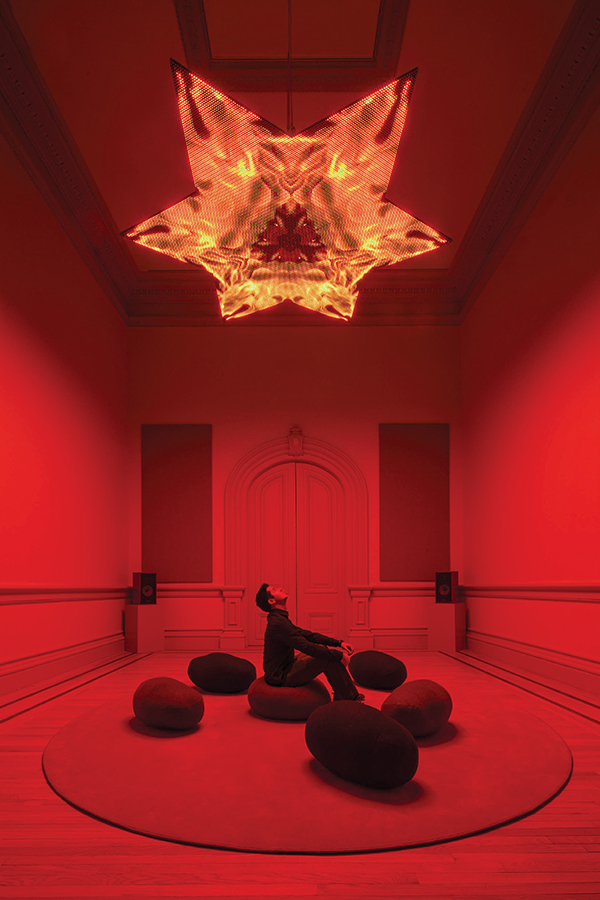
Christopher Schardt’s Nova installed in the Renwick Gallery. Schardt creates large installations of programmable LED lights that “dance” to musical accompaniment. Nova is one of his smaller pieces, designed to fit in compact spaces.
How well will Burning Man transfer to the rarefied air of the museum and to the streets of Pierre Charles L’Enfant’s methodically organized city? “We’re not trying to be Burning Man,” Atkinson stresses, though the Burner community advised the museum on pieces to be included in the exhibition, and some local Burners have even been invited to serve as “ambassadors” of Burning Man for visitors to the show. Sadly, the Renwick will have to dispense with the cathartic burn that puts an exclamation point on the end of each year’s festivities in the desert, but disappointed Burning Man purists (or mourners wishing to toast Larry Harvey, Burning Man’s co-founder, who died in April) should eventually be able to get their fix: anything left by museumgoers at David Best’s bespoke temple will be shipped to the desert and thrown on the pyre.


